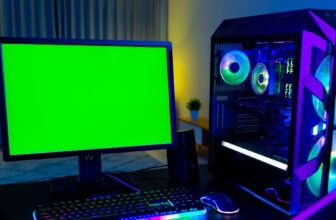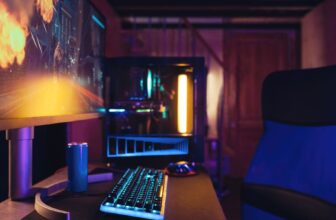
When considering a gaming desktop, you might be wondering about the significance of upgradability. It's not just about the initial specs but also about how adaptable your system can be in the face of ever-evolving gaming demands. The ability to enhance key components can make a substantial difference in your gaming experience. But just how crucial is upgradability in the grand scheme of things? Let's explore the impact it can have on your setup and gaming performance.
Benefits of Upgradability
When you invest in a gaming desktop with upgradability, you ensure that your system can evolve alongside your gaming needs. By having the ability to upgrade components such as the graphics card, processor, and RAM, you can adapt to newer and more demanding games without having to purchase an entirely new system. This not only saves you money in the long run but also allows you to stay current with the latest gaming technologies.
Upgradability also gives you the flexibility to customize your gaming desktop to suit your preferences. Whether you want to enhance your system's performance for competitive gaming or improve its multitasking capabilities for streaming, upgrading specific components can help you achieve your desired gaming experience.
Furthermore, having a gaming desktop with upgradability future-proofs your investment. As technology advances and new hardware innovations emerge, being able to upgrade your system ensures that you can keep up with the evolving gaming landscape without starting from scratch. Upgradability ultimately grants you the freedom to tailor your gaming desktop to meet your unique needs and preferences.
Performance Impact of Upgrades
Curious about how upgrades can boost your gaming desktop's performance?
Upgrading components like the CPU, GPU, RAM, and storage can have a significant impact on your system's speed and capabilities. By installing a more powerful CPU, you can experience faster processing speeds, allowing for smoother gameplay and better multitasking.
Upgrading your GPU to a newer model can enhance graphics quality, enabling you to play the latest games at higher resolutions and frame rates. Adding more RAM can improve overall system performance by allowing for more applications to run simultaneously without slowing down.
Additionally, upgrading your storage to a solid-state drive (SSD) can drastically reduce load times in games and when booting up your system. These performance upgrades can breathe new life into your gaming desktop, allowing you to enjoy a more immersive and seamless gaming experience.
Cost Considerations and Savings
To maximize the value of upgrading your gaming desktop, it's essential to carefully consider costs and potential savings. When contemplating upgrades, assess the cost of the components you wish to replace or add. Compare prices from different retailers or manufacturers to find the best deal. Sometimes, buying components separately and upgrading them yourself can be more cost-effective than purchasing a completely new system. Additionally, keep an eye out for promotions, discounts, or sales that can help you save money on upgrades.
Consider the long-term savings that upgradability can offer. Investing in a gaming desktop that allows for easy upgrades can save you money in the future by extending the lifespan of your system. Instead of purchasing an entirely new computer every few years, you can simply upgrade individual components as needed, which is often more budget-friendly in the long run. By carefully weighing the costs and potential savings of upgrading your gaming desktop, you can make informed decisions that benefit both your gaming experience and your wallet.
Future-Proofing Your Gaming Setup
Considering the rapid advancements in gaming technology, future-proofing your gaming setup is vital to ensure optimal performance and longevity. To future-proof your gaming setup, start by investing in high-quality components that can handle the demands of upcoming games.
Look for a powerful graphics card, a fast processor, and ample RAM to keep up with evolving game requirements. Additionally, choosing a motherboard with room for upgrades can extend the lifespan of your system.
Opting for a modular design that allows for easy component upgrades is another smart move. This way, you can swap out parts as needed without having to replace the entire system. Keeping your software up to date and maintaining good airflow within your gaming rig can also help prolong its usability.
Regularly clean your system and ensure that it's adequately cooled to prevent overheating and performance issues.
Upgradability Vs. Out-Of-The-Box Power
When deciding between upgradability and out-of-the-box power for a gaming desktop, it's essential to weigh the benefits of each option carefully. Upgradability allows you to customize and adapt your system over time to meet evolving gaming requirements. While a gaming desktop with out-of-the-box power may offer immediate high performance, it could become outdated quickly as technology advances.
Opting for upgradability provides flexibility, enabling you to replace or upgrade components such as the graphics card, processor, or storage to keep up with the latest gaming demands. This can potentially extend the lifespan of your gaming desktop and save you money in the long run by allowing incremental upgrades instead of purchasing an entirely new system.
On the other hand, choosing a gaming desktop with high out-of-the-box power can deliver exceptional performance right from the start without the need for immediate upgrades. This option is ideal if you prioritize immediate gaming performance over long-term flexibility. Ultimately, the decision between upgradability and out-of-the-box power depends on your gaming preferences, budget, and future-proofing goals.




